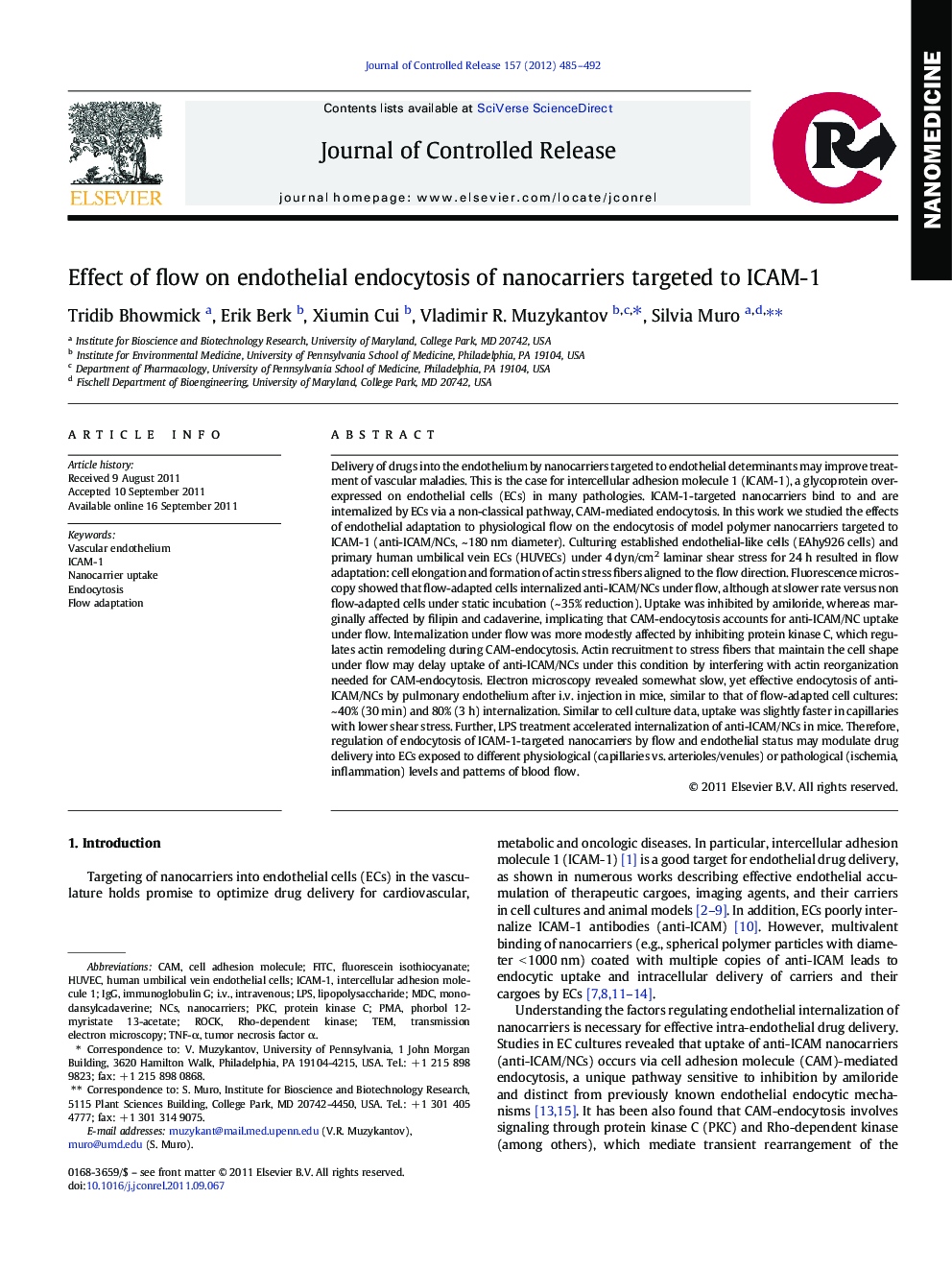| Article ID | Journal | Published Year | Pages | File Type |
|---|---|---|---|---|
| 1424934 | Journal of Controlled Release | 2012 | 8 Pages |
Delivery of drugs into the endothelium by nanocarriers targeted to endothelial determinants may improve treatment of vascular maladies. This is the case for intercellular adhesion molecule 1 (ICAM-1), a glycoprotein overexpressed on endothelial cells (ECs) in many pathologies. ICAM-1-targeted nanocarriers bind to and are internalized by ECs via a non-classical pathway, CAM-mediated endocytosis. In this work we studied the effects of endothelial adaptation to physiological flow on the endocytosis of model polymer nanocarriers targeted to ICAM-1 (anti-ICAM/NCs, ~ 180 nm diameter). Culturing established endothelial-like cells (EAhy926 cells) and primary human umbilical vein ECs (HUVECs) under 4 dyn/cm2 laminar shear stress for 24 h resulted in flow adaptation: cell elongation and formation of actin stress fibers aligned to the flow direction. Fluorescence microscopy showed that flow-adapted cells internalized anti-ICAM/NCs under flow, although at slower rate versus non flow-adapted cells under static incubation (~ 35% reduction). Uptake was inhibited by amiloride, whereas marginally affected by filipin and cadaverine, implicating that CAM-endocytosis accounts for anti-ICAM/NC uptake under flow. Internalization under flow was more modestly affected by inhibiting protein kinase C, which regulates actin remodeling during CAM-endocytosis. Actin recruitment to stress fibers that maintain the cell shape under flow may delay uptake of anti-ICAM/NCs under this condition by interfering with actin reorganization needed for CAM-endocytosis. Electron microscopy revealed somewhat slow, yet effective endocytosis of anti-ICAM/NCs by pulmonary endothelium after i.v. injection in mice, similar to that of flow-adapted cell cultures: ~ 40% (30 min) and 80% (3 h) internalization. Similar to cell culture data, uptake was slightly faster in capillaries with lower shear stress. Further, LPS treatment accelerated internalization of anti-ICAM/NCs in mice. Therefore, regulation of endocytosis of ICAM-1-targeted nanocarriers by flow and endothelial status may modulate drug delivery into ECs exposed to different physiological (capillaries vs. arterioles/venules) or pathological (ischemia, inflammation) levels and patterns of blood flow.
Graphical abstractFlow modulates endocytosis of anti-ICAM nanocarriers targeted for intracellular drug delivery in the vasculature, likely due to actin status of flow adapted endothelium.Figure optionsDownload full-size imageDownload as PowerPoint slide
